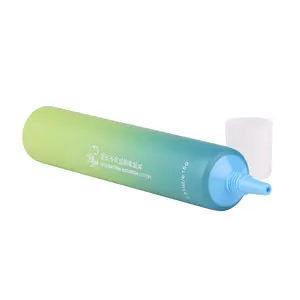

Empty Plastic Tubes Empty Eco Friendly Cosmetic 5 10 15 Ml Plastic Tube Manufacturer Frosted Long Nozzle Tube

Pvc Pipe Prices Sam-uk Original Factory Export High Quality Environmental Protection Plastic 4 Inch Price Schedule 40 Pvc Pipe 2























Plastic tubing is a form of tubing that is made by combining different chemicals with a polymer to create a solid or flexible material. Plastic piping has revolutionized industrial processes and found use in a wide range of applications since it was first used in the 1950s. Because of its flexibility and adaptability, plastic tubing is widely used. In order to specifically match many applications, it is created in a wide range of wall thicknesses, diameters, tolerances, and strengths utilizing a combination of materials.
Acrylic tubing: An acrylic tube weighs half as much as glass, and it is clear, impact- and UV-resistant. It is employed in many different applications, ranging from industrial processes to lighting.
PVC tubing (polyvinyl chloride): A PVC tube has exceptional flexibility and is resistant to chemicals, corrosion, abrasion, and wear. Numerous industrial applications make use of it.
Fiberglass tubing: Pultruded fiberglass and thermoset polyester or vinyl are combined to create a fiberglass plastic tube. It is resistant to UV rays and corrosion and is available in hundreds of shapes. Fiberglass tubing offers dimensional stability and is utilized as an electrical insulator.
Nylon tubing: Nylon tubes are lightweight, abrasion- and corrosion-resistant properties. It can be bent repeatedly over extended periods of time without becoming tired or breaking because of its exceptional elastic memory. Nylon tubing has extremely little moisture absorption and can withstand impacts even at below-freezing temperatures.
Polycarbonate tubing: Extreme conditions are not a problem for polycarbonate tubes. It is robust and lightweight, yet resistant to impact and flames. It is possible to drill and mill polycarbonate tubing without it breaking.
Corrugated plastic tubing: Corrugated tubing finds applications in laboratories, corrosive settings, chemical processing, and the transport of high-purity fluids and solvents. It may be crushed or stretched without damaging the ID because it is incredibly flexible. Corrugated plastic tubing can be produced in a range of IDs and lengths.
Heat-shrinkable plastic tubing: Heat-shrinkable tubing is used to insulate wiring. It is positioned around the wire and then compressed to provide a tight fit. At high temperatures, it is resistant to fuels, lubricants, acids, and solvents.
Medical plastic tubing: The National Sanitation Foundation (NSF) and the United States Pharmacopeia (USP) have strict guidelines that must be followed while manufacturing medical plastic tubing. NSF 51 describes the use of plastics with food products, while USP Class VI specifies the requirements for biological reactions. Transparent, sterile, reusable, and nonreactive with biological fluids or tissues are requirements for medical tubing.
Square plastic tubing: Square plastic tubing is mostly used for aesthetic purposes and has very little other function. It can move both liquids and gasses and performs the same tasks as cylindrical tubing. It is used in the creation of lawn furniture because of its strength.